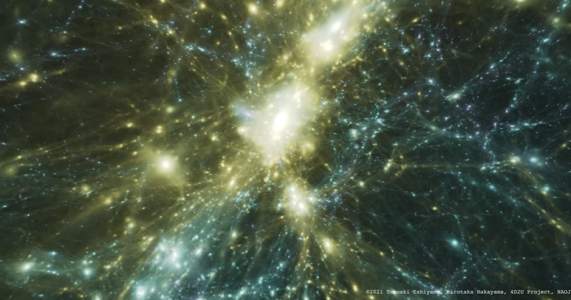Madrid Spain.
Developed by an international team of researchers’உச்சு‘, The most realistic virtual simulation of the universe achieved to date, and thanks for achieving it ATERUI II, The Japanese supercomputer Built conveniently to understand astronomical phenomena from the most powerful theoretical perspective in the world.
This is driven by virtual creation, National Astronomical Observatory of Japan (NAOJ) The Andalusian Astrophysics Institute (IAA-CSIC) and the Galicia Supercomputing Center (CESGA) are involved in the preparation of the study groups. CESGA Cloud Users Who want to use it for their study.
From other research groups Japan, USA, Argentina, Australia, Chile, France and Italy.
“We believe உச்சு Allowing the evolution of the universe to be read with a detailed level and amount of unprecedented information, able to observe different moments of its temporal dimension. Big Bang Until now, “points out IAA-CSIC researcher Francisco Prada.
This simulation contains 2,097,152,000,000 (2.1 trillion) particles per cube at 9.630 million light-years on one side, comparable to Earth and half the distance and most distant galaxies. CSIC notes.
To Julia Ferrer, researcher IAA-CSIC What do you use உச்சு To read the large-scale structure of the universe, read “No other simulation can show so much information while maintaining high resolution. Generally you have to choose one of two variables.”
This virtual creation can simulate the evolution of matter throughout the universe: 13.8 billion years of history, The life of the animals on earth is thirty times that of the time when they first left the sea.
A) Yes, உச்சு Researchers may present some scenarios such as the collision of two black holes in the past and allow these phenomena to be read without the need to resort to direct observations.
To create உச்சு The researchers used all available processors Supercomputer ATERUI II Throughout the year; The 40,200 CPU cores work 48 hours each month to make this program a reality.
Explain Tomaki Ishiyama, From the University of Siba (Japan) and responsible for creating and implementing the code that creates this simulation, resulting in “3 petabytes of data, equivalent to approximately one million photos Cell phone 12 megapixels “
To store such a large amount of information and compress it into a form that can work even in the cloud, the researchers used high-performance computational techniques.
The CESGA, Mixed center CSIC And Sunda de Galicia, Is responsible for hosting all simulation data.
List of உச்சு Now available in the cloud CESGA It is completely free.
“It simply came to our notice then உச்சு Available to other research groups who do not have the ability or money to produce their own simulation. In the end, it’s something that benefits us all. “
Objects created from this virtual universe will be important to better understand the map of galaxies. Ground tests Euclid space travel by DESI and PFS and the European Space Agency (ESA).
Team உச்சு Works on second data output containing lists Virtual galaxies and lens maps Gravity.


:quality(85)/cloudfront-us-east-1.images.arcpublishing.com/infobae/SMPW7M5BQFERBOQUPJXKCOKARY.jpg)
:quality(85)/cloudfront-us-east-1.images.arcpublishing.com/infobae/NP5NEZXMZFGNLBHNEQJHPJVMKM.jpg)

:quality(85)/cloudfront-us-east-1.images.arcpublishing.com/infobae/X7DZAL3I4REJTKPZ4Y4DYBHFMI.jpg)